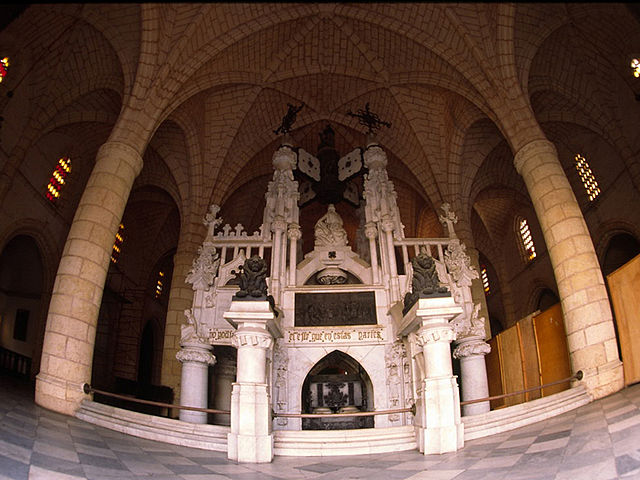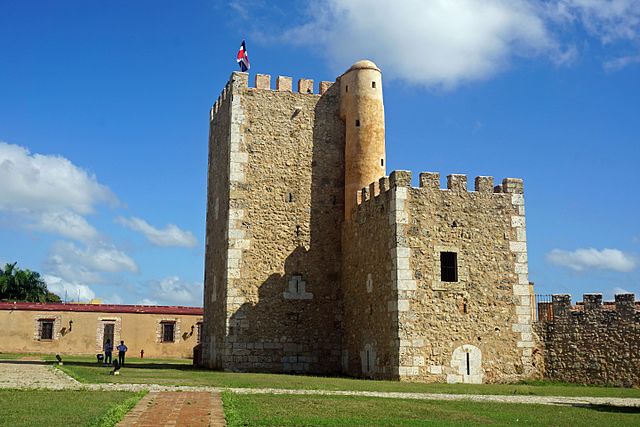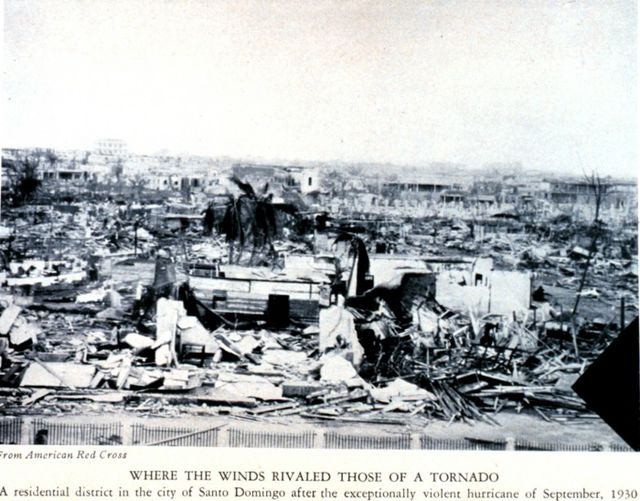Santo Domingo, once known as Santo Domingo de Guzmán, known as Ciudad Trujillo between 1936 and 1961, is the capital and largest city of the Dominican Republic and the largest metropolitan area in the Caribbean by population. As of 2022, the city and immediate surrounding area had a population of 1,029,110 while the total population is 3,798,699 when including Greater Santo Domingo. The city is coterminous with the boundaries of the Distrito Nacional, itself bordered on three sides by Santo Domingo Province.
Tomb that housed the remains of Christopher Columbus until 1795 (at the cathedral).
The Ozama Fortress is one of the surviving sections of the Walls of Santo Domingo, which is recognized by UNESCO as being the oldest military construction of European origin in the Americas.
Colonial Wall surrounding Santo Domingo, in 1899, Allison V. Armour Expedition
Destruction of Santo Domingo after the hurricane
Saint Dominic,, also known as Dominic de Guzmán, was a Castilian Catholic priest and the founder of the Dominican Order. He is the patron saint of astronomers and natural scientists, and he and his order are traditionally credited with spreading and popularizing the rosary. He is alternatively called Dominic of Osma, Dominic of Caleruega, and Domingo Félix de Guzmán.
Santo Domingo de Guzmán, portrait by the Spanish painter Claudio Coello in 1670
A picture of St Dominic accompanied by Simon de Montfort raising the crucifix against the Cathars by Daniel van den Dyck
The vision of St. Dominic receiving the rosary from the Virgin by Bernardo Cavallino
Saint Dominic's House in Toulouse








